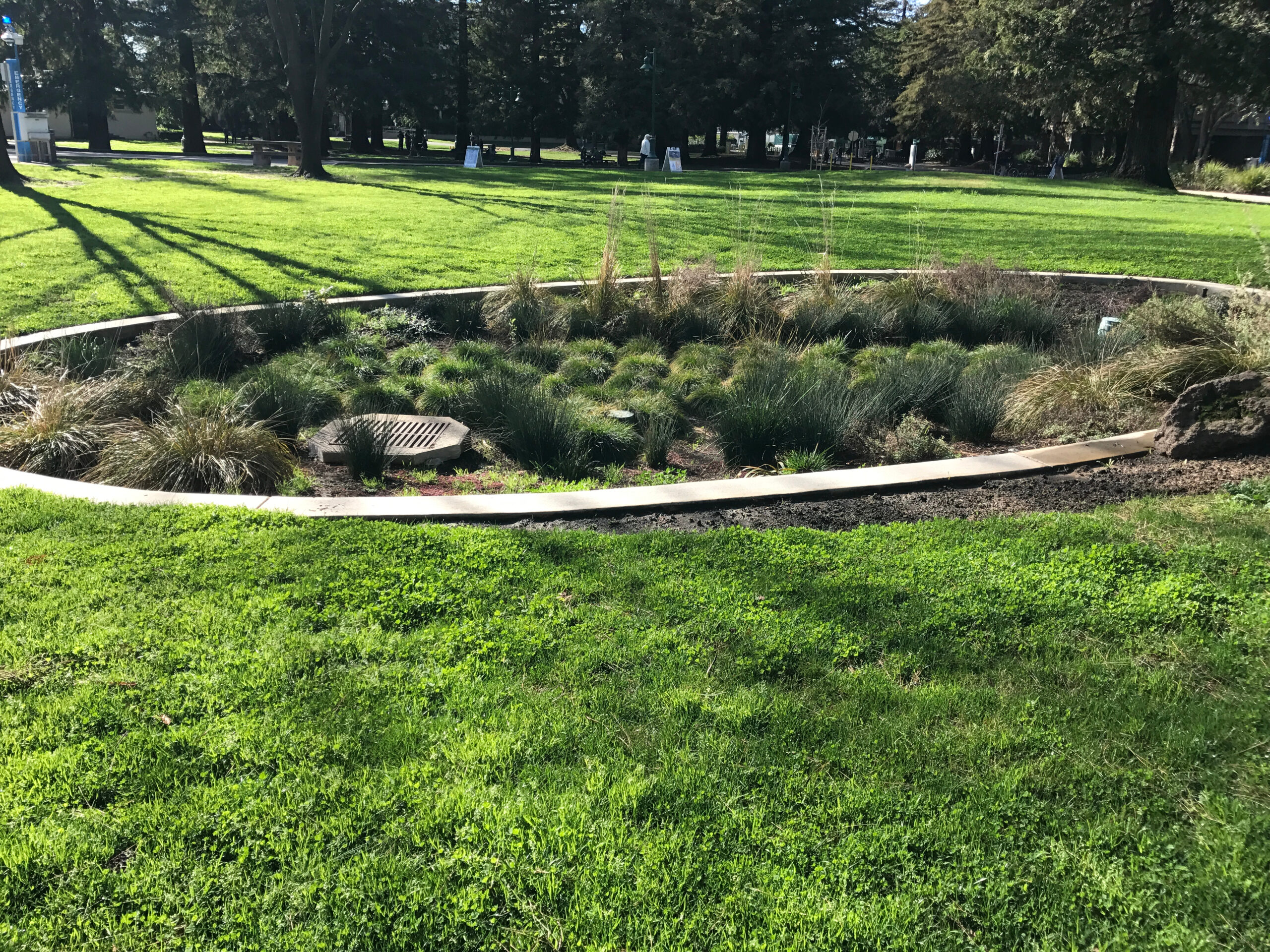As custom home builders take more interest in maintaining a positive environmental footprint, rain gardens have become a clever option to achieve landscaping success. While many opt for rain barrels beneath downspouts, rain gardens are a much more aesthetically pleasing. This method of collecting rainwater and slowly dispersing it to surrounding plants can easily be incorporated within the yard of a custom-built home. Even better? The steps from collection to absorption involve minimal manual intervention once established.
Luxury homes that include a rain garden designate an outdoor space purposed to tolerate heavy rainfall or runoff. Once built, a rain garden will serve as a natural filter as water is captured by native, water-tolerant vegetation to then allow a slow absorption into the surrounding soil. The key to success is placement. Rain gardens should be positioned in low-lying areas of the yard, typically in those spots where water pools after a downpour.
There are many benefits to a rain garden:
- Environmentally Friendly: As the rain garden collects runoff, it also intercepts pollutants before they can reach local water sources.
- Wildlife Watering Holes: Because a rain garden’s plants thrive year-round, pollinators will be popular. Bees, butterflies, and birds will be attracted to the area in search of a quick drink or bath.
- Runoff Reduction: Flash flooding is common in rainy months, but rain gardens can lessen the volume of water runoff. This will create a trickle-down effect as the potential for local flooding decreases.
- Aesthetically Appealing: Native plants blossom with proper irrigation and rain gardens can home a variety of seasonal plants, creating year-round beauty.
Creating a rain garden begins with choosing its location and should complement the beauty already surrounding your home, such as the gorgeous, wooded lots in Ryan’s Crossing. Choose an area that is at least 10 feet from your home’s foundation and downhill from water runoff. If your goal is to link downspouts to your rain garden, this can be achieved with French drains, rain chains, or a beautiful swath of river rock leading to the garden. Sunlight should brighten the rain garden throughout the day to encourage evaporation.
Once you’ve determined where to build your rain garden, perfect your design:
- Mark an area about 20% larger than the typical pooling zone. Plan a garden that has an interesting shape to create a more natural look. Kidney or teardrop shapes are the most common.
- The most difficult stage is digging the rain garden but, in this case, resist the urge to overdo it. An effective rain garden is only 4-8” deep as any further creates an evaporation rate that is too slow to allow proper dry-out between rainfalls.
- Design both a reliable inlet and The outlet is important to allow any overflow to exit the garden.
- If your beautiful new home is still under construction, you may even engage your builder’s assistance.
As you approach planting, plan on combining compost with the native soil to enhance infiltration. Some prefer to line the bottom of their rain garden with small rocks, but it is typically not necessary. Creating a rain garden edge with landscaping stones is also an option, though it should not exceed the height of the garden.
Selecting plants for a rain garden is exciting as shoppers can frequent the wet-tolerant aisles at local nurseries. In central North Carolina, these plants are often left out of gardens due to their hot and dry summer months.
- Choose wet-tolerant plants for the lowest point of the garden such as milkweed, irises, and hibiscus.
- In the middle, plant moisture-loving plants such as lilies, black-eyed susans, or cardinal flowers.
- Edge the garden with drought-tolerant plans such as coneflowers, bottlebrushes, or bougainvillea.
Once your rain garden is established, maintenance should be minimal. Initially, the garden will require more watering during prolonged dry spells, weeds will need to be removed and mulch should be replenished. Over time, as the garden establishes itself, it will require a decreasing amount of manual intervention.
Rain gardens are not only beautiful, but they are also a wonderful way to encourage a healthy environment. While rain gardens may seem like a simple touch to one’s yard, they also contribute to the prevention of water pollution and flooding. Newly constructed homes that include a rain garden have an immediate positive impact on their carbon footprints. As Ryan’s Crossing is a pioneering subdivision with a strong focus on conversation, rain gardens are a perfect addition to its already gorgeous homesites.
